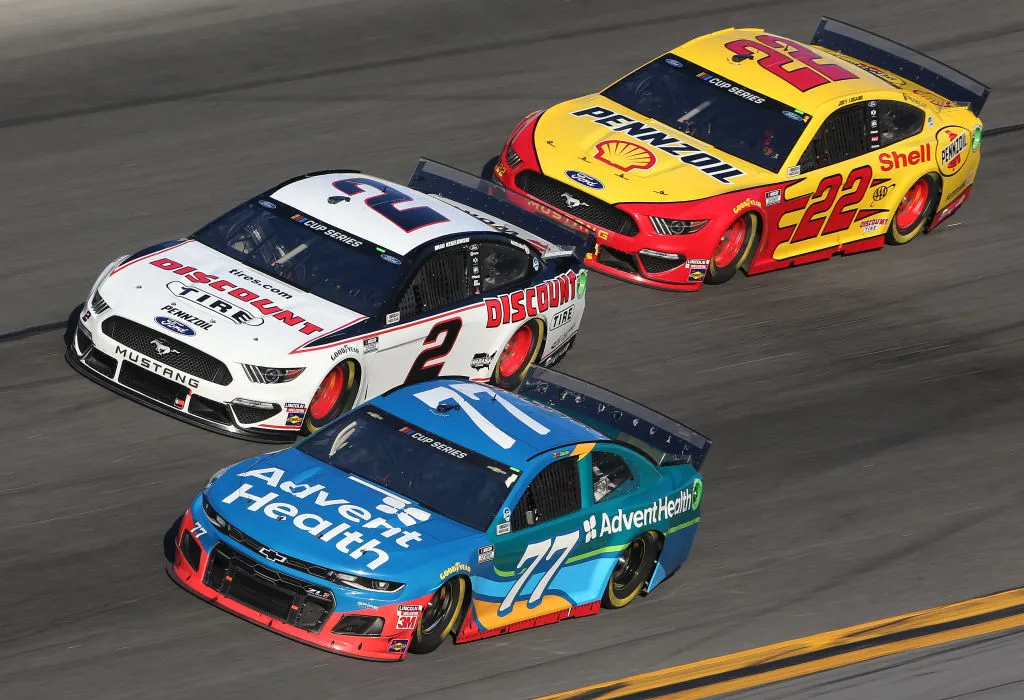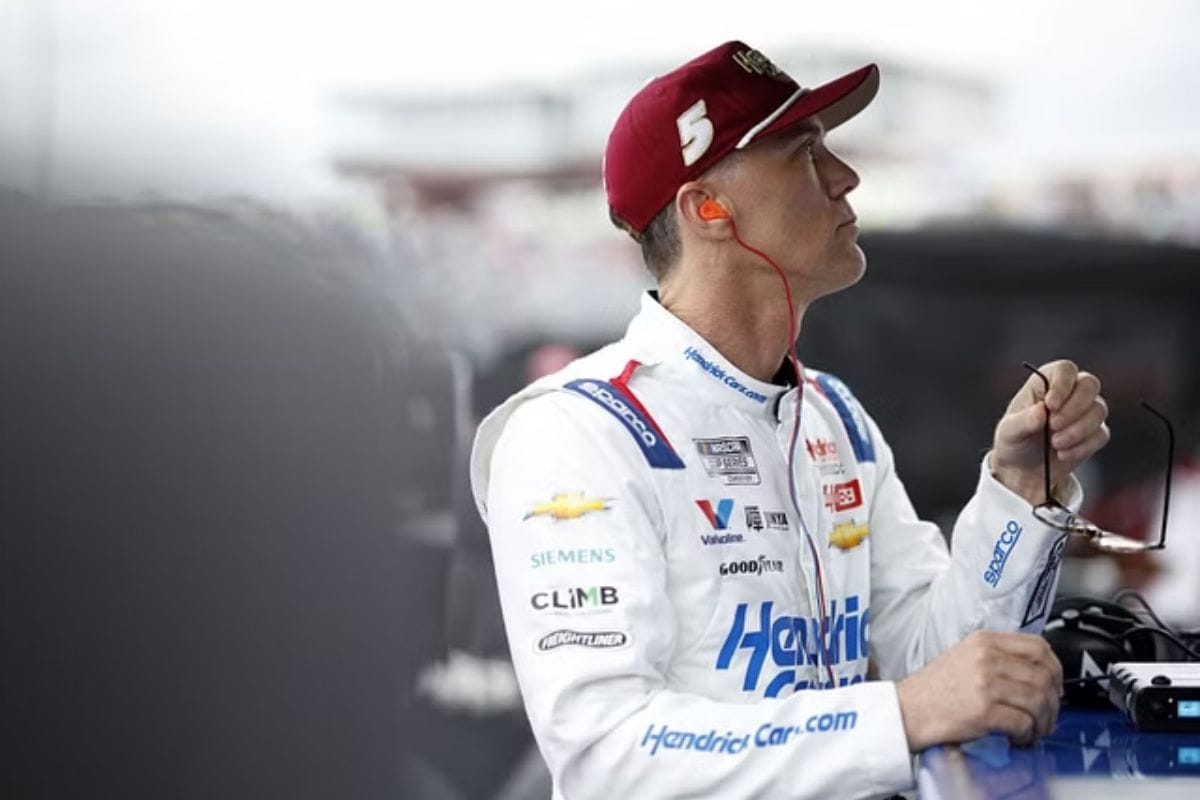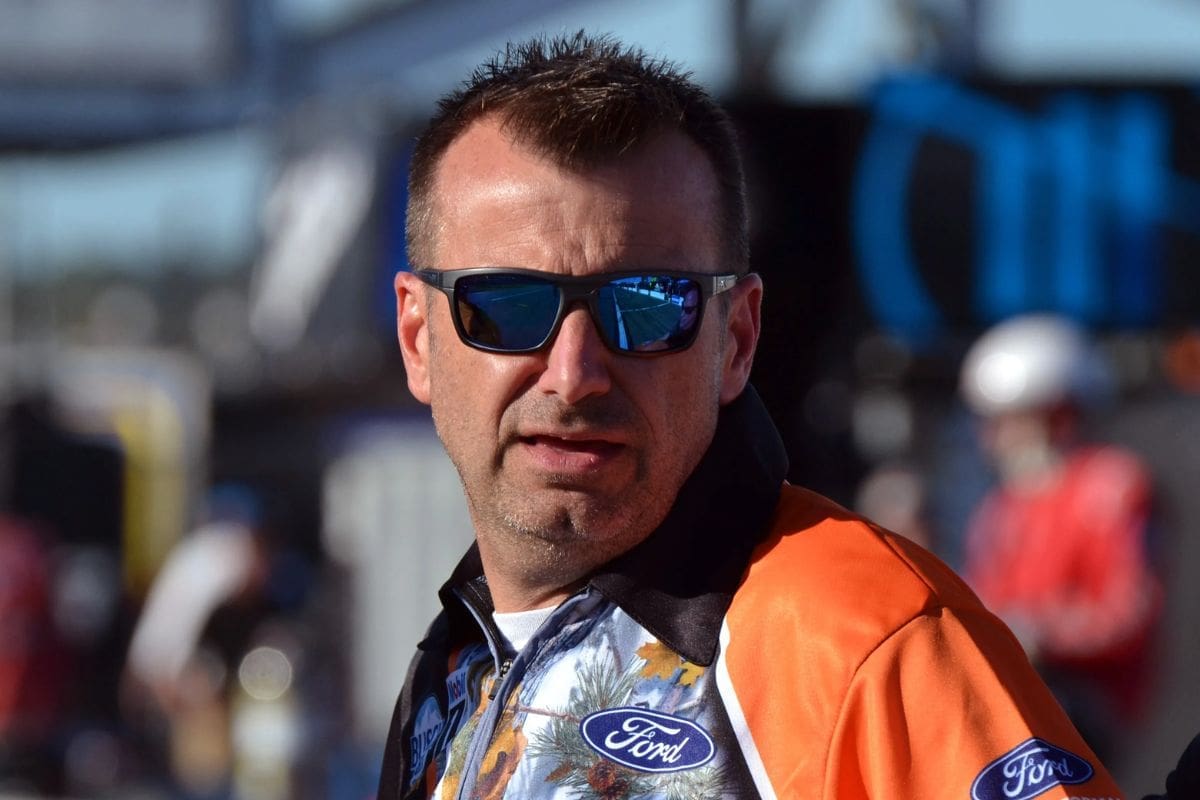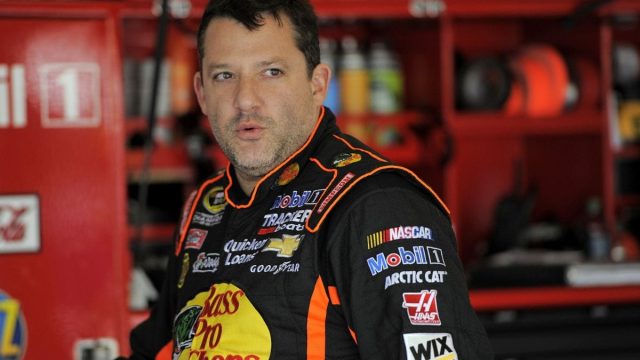Tony Stewart’s NASCAR Exit: Tony Stewart‘s sudden departure from NASCAR and the subsequent closure of Stewart-Haas Racing has sent shockwaves through the racing community, leaving families in confusion and employees gripped with fear. This unexpected move signifies the end of an era and exposes the fragile ecosystem supporting motorsports. Insiders reveal the emotional and financial toll on the behind-the-scenes staff, whose livelihoods are now in danger. As the community grapples with the fallout, key figures like Chase Briscoe and Rodney Childers offer insights into the chaos, painting a picture of the human cost behind Stewart’s exit.
Key Highlights
- Tony Stewart’s NASCAR exit created significant job insecurity for hundreds of employees.
- Families of former SHR employees face financial instability and potential relocations.
- The emotional toll on employees and their families has been devastating.
- The closure has disrupted a strong community built over years.
- Finding new job opportunities is difficult due to the specialized skill set required.
Announcement and Impact
Tony Stewart’s announcement of the closure of Stewart-Haas Racing not only marked the end of an era for a championship-winning team but also triggered a wave of uncertainty and concern among the hundreds of employees and their families suddenly facing unemployment. The news hit the NASCAR community like a thunderclap, leaving many to grapple with the implications of such an unforeseen decision. Stewart-Haas Racing had been a powerhouse in the NASCAR circuit, a symbol of resilience and competitive spirit. Despite recent struggles, its abrupt closure was not predicted by industry insiders or fans.
Employees, from mechanics to marketing personnel, found themselves at a crossroads, their professional lives disrupted overnight. The anxiety was not confined to the workplace; it extended to households dependent on the stability provided by the organization. For many, Stewart-Haas Racing was not just an employer but a secondary family, a community bound by shared goals and the excitement of racing. The announcement highlighted a dual impact—displacing workers and fragmenting a tight-knit community.

The shockwaves extended beyond the immediate Stewart-Haas Racing circle. Competitors, sponsors, and stakeholders across the NASCAR landscape were left to reassess their own strategies and contingencies. The closure emphasized the volatile nature of the sport, where fortunes can shift dramatically. Tony Stewart’s decision, while challenging, revealed an unsettling truth about the precarious balance between success and survival in NASCAR.
The Reality Behind the Scenes
While the sudden closure of Stewart-Haas Racing surprised the NASCAR community, it also peeled back the curtain on the often-overlooked struggles faced by those who dedicate their lives to the sport. Beyond the glitz and glamour of high-speed races and victory celebrations lies a world fraught with uncertainty and financial instability. The decision to shutter operations left drivers and crew chiefs in limbo and the countless support staff who work tirelessly behind the scenes.
For many, the reality is clear: job loss means more than a loss of income. It represents the disintegration of a lifestyle and a community built over years. Employees, from engineers to hospitality staff, have invested significant emotional and financial resources into their roles. The abrupt closure has upended lives, forcing families to confront an unexpected and unsettling future. Children face the prospect of relocating schools, while spouses may have to leave behind established careers in the local economy of their racing hub.
Amidst the chaos, the often-unseen labor of pit crews, mechanics, and administrative staff has been rendered unnoticed. These individuals are the backbone of any successful racing team, and their situation highlights the precarious nature of employment in the world of NASCAR.
SHR Insider Uncovers Impact
An SHR insider has revealed the profound impact of the team’s closure, shedding light on the cascading effects that extend far beyond the immediate financial struggles. The retirement of key drivers such as Kevin Harvick and Tony Stewart, coupled with the departure of major sponsors, has left Stewart-Haas Racing (SHR) grappling with severe financial constraints. The insider’s revelations paint a picture of a team in turmoil, with employees facing an uncertain and grim future.
In a detailed analysis, the insider outlined four key areas where the impact is most acutely felt:
- Job Security: The announcement in the conference room shattered any remaining semblance of job security. Employees, from engineers to pit crew members, are now left wondering about their future in a sport that offers few guarantees.
- Family Welfare: Many employees rely on SHR for their livelihood. The abrupt closure has left families in financial distress, scrambling to find alternative employment in a challenging economic environment.
- Industry Ripple Effect: The impact extends beyond SHR, affecting suppliers, contractors, and sponsors who have long-standing relationships with the team. The ripple effect is felt throughout the NASCAR ecosystem, destabilizing smaller businesses that depended on SHR’s backing.
- Emotional Toll: The mental impact on employees cannot be understated. The sudden upheaval has led to heightened stress and anxiety, with many grappling with an uncertain future and the potential need to relocate or change careers.

Chase Briscoe’s Reaction
How did Chase Briscoe, a rising talent in the NASCAR realm, react to the surprising announcement of Stewart-Haas Racing’s closure?
Briscoe’s immediate reaction was one of urgency and concern. Upon learning the unforeseen news, he wasted no time in reaching out to other teams and industry insiders. His prompt action was motivated by the dual pressures of professional unpredictability and personal responsibility. With a family to provide for and the upcoming birth of twins, Briscoe’s situation highlighted the broader human impact of Stewart-Haas Racing’s sudden dissolution.
Briscoe’s honesty about his predicament reflects his deep understanding of the stakes involved. He openly admitted that he had no prior hint of the team’s closure, a disclosure that left him—and many others—scrambling. His proactive approach in securing a position at Joe Gibbs Racing demonstrates both his resilience and the high stakes of NASCAR’s competitive environment. Yet, Briscoe’s success in finding a new team is not a universal outcome; not all his peers have been as fortunate.
In his public statements, Briscoe has balanced personal unease with broader empathy, acknowledging the widespread ripple effects on employees and their families. His story encapsulates a microcosm of the larger crisis engulfing the NASCAR community. Briscoe’s shift to Joe Gibbs Racing offers a semblance of stability amidst chaos, yet it also highlights the harsh reality that not everyone can navigate such turbulent waters with similar success.
Rodney Childers’ Perspective and New Role
In the turbulent aftermath of Stewart-Haas Racing’s closure, Rodney Childers has emerged as a poignant voice, articulating both the immediate fears and long-term hopes of his displaced colleagues. Childers, the crew chief of the now-defunct #4 team, has been candid about the grim realities facing the skilled yet jobless members of SHR. In his conversation with NASCAR journalist Claire B Lang, Childers highlighted the pervasive anxiety among the team: “There are a lot of people in SHR who still don’t have jobs. There are a lot of people who are just scared.”
“There are a lot of people in SHR who still don’t have jobs. There are a lot of people who are just scared. They have families, they have house payments, they have this and that. There is a lot of talk going on. I feel there is a place for everybody. Where that place is is hard to say. I think there’s still a lot of things going on. With all the charters, and all the different things.” – Childers
His insights offer a glimpse into the broader implications of the closure, underscoring the human element often overshadowed by the high-profile narratives of drivers. Childers’ words serve as a vivid reminder of the personal stakes involved:
- Job Security: Many former SHR employees are grappling with the uncertainty of their next paycheck.
- Family Concerns: The impending financial instability affects not just the individuals but also their families.
- Professional Uncertainty: The specialized skill set of NASCAR professionals is not easily transferable, making the job search particularly challenging.
- Community Displacement: The tight-knit nature of racing teams means that many are not just losing jobs but a sense of belonging.
Despite these challenges, Childers remains hopeful for his colleagues, expressing his desire for them to find new roles where they can thrive. “Hopefully, everybody can end up in a good spot,” he said, emphasizing the need for a supportive and enjoyable work environment.
@RodneyChilders4 said one thing that convinced him to sign w @SpireMotorsport were membersof his #4 team who already moved to Spire. I asked this about team members left @StewartHaasRcng pic.twitter.com/s4iFjEFxxM
— Claire B Lang (@ClaireBLang) July 9, 2024
While Childers himself has secured a position for the 2025 season, his empathy and concern reflect a deep understanding of the ongoing struggles within the NASCAR community.
Kevin Harvick’s Former Crew Chief Joins Spire Motorsports
The shift of Rodney Childers to Spire Motorsports signifies a monumental change within the NASCAR landscape, as the championship-winning crew chief brings his extensive expertise and steadfast loyalty to Corey Lajoie’s No. 7 Chevrolet. Childers’ move has been met with considerable anticipation, marking a pivotal moment for both Spire Motorsports and the broader racing community.
Welcome to Spire, Rodney.
We're proud to announce @RodneyChilders4 will be joining the team as crew chief of the No. 7 Chevrolet in 2025 and beyond.
Learn more: https://t.co/jOtn01TIPo pic.twitter.com/pAqtocVikl
— Spire Motorsports (@SpireMotorsport) July 9, 2024
For a decade, Childers stood as a constant pillar for Kevin Harvick at Stewart Haas Racing, capturing an impressive 40 wins and solidifying his reputation as a hall-of-fame worthy crew chief. Despite numerous offers from other teams, Childers’ loyalty to Harvick and Stewart Haas Racing remained unshaken—until now. His shift to Spire Motorsports is not just a career change; it is a statement to Spire’s burgeoning potential and well-planned vision.
Jeff Dickerson, co-owner of Spire Motorsports, expressed profound excitement over this acquisition. Dickerson highlighted that bringing Childers on board was an ‘organic decision,’ emphasizing the crew chief’s unparalleled record and intrinsic value. ‘
“There are decisions that professional racing teams make daily that take courage, require deep thought, and have some element of rolling the dice. To be clear, this wasn’t one of them. Rodney is a hall-of-fame worthy, championship-winning crew chief with 40 wins.” – Dickerson
Childers himself mirrored this enthusiasm, pointing to Spire’s remarkable growth and their investment in people as key factors in his decision. His move to Spire is more than just a calculated move; it represents a convergence of shared values and ambitions.

News in Brief: Tony Stewart’s NASCAR Exit
The abrupt exit of Tony Stewart from NASCAR and the resultant closure of Stewart-Haas Racing has plunged numerous families into crisis and left employees in a state of terror. The dissolution of this tight-knit community highlights the volatility inherent in the sport.
The emotional and financial turmoil experienced by the behind-the-scenes staff emphasizes the profound and far-reaching consequences of Stewart’s departure, illustrating the precarious nature of employment within the NASCAR industry.
ALSO READ: Tony Stewart’s Star’s Exit Could Open NASCAR Spot for Noah Gragson
